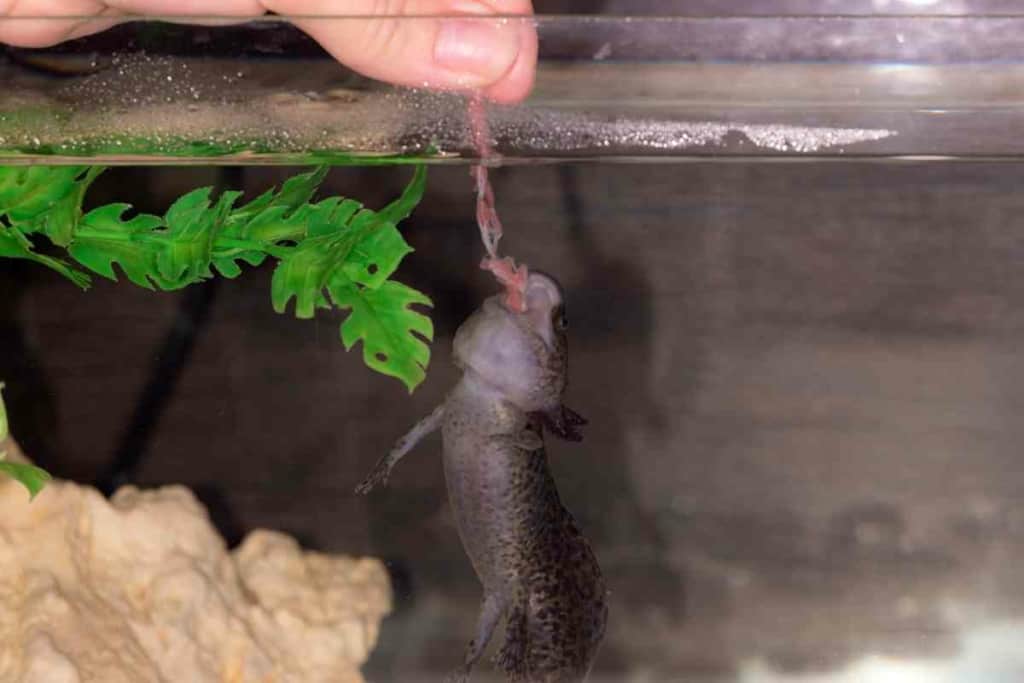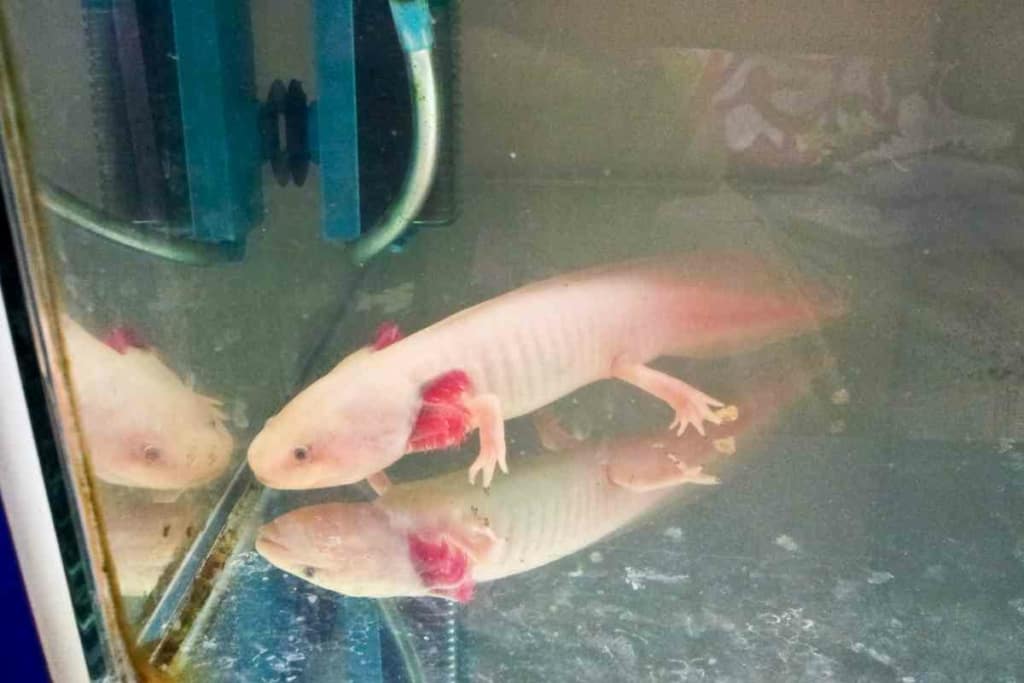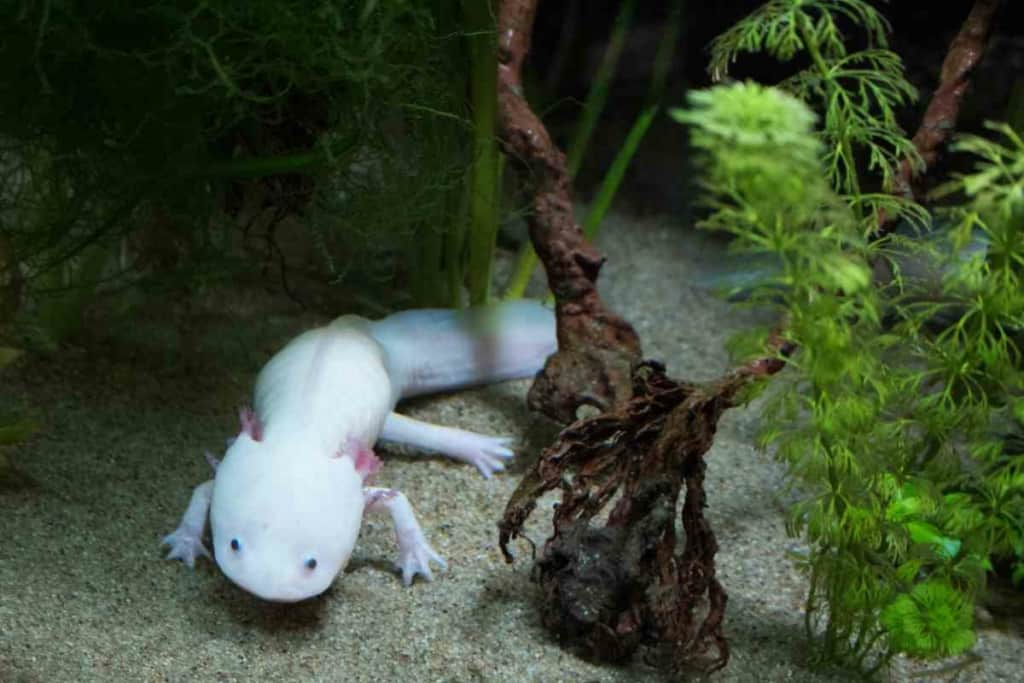5 Foods To Feed Juvenile Axolotl
Raising a young axolotl and uncertain about its diet? Delve into the specifics of feeding juvenile axolotls, ensuring they get the right nutrition during these crucial growth stages. This article offers clear guidance for new and experienced caregivers alike. Let’s embark on this feeding journey together. Dive in!
What should I feed a juvenile axolotl?
Juvenile axolotls require a protein-rich diet for optimal growth. Typically, they are fed live daphnia (water fleas) and baby brine shrimp during their earliest stages. As they grow, they can transition to larger prey such as bloodworms and small earthworms. It’s vital to offer appropriately sized food items and ensure that the axolotl can easily consume them without struggling.
As the owner of many axolotls, both juvenile and adult, I have a wealth of experience in caring for them. Together with my fellow axolotl enthusiasts, we have consulted with many experts and veterinarians on how to care for them.

What Do Axolotls Eat in the Wild?
In the wild, axolotls are mostly carnivorous, feeding on small invertebrates, fish, and amphibians.
However, they are opportunistic feeders and will consume plant matter if available. They can feed on worms, snails, insects, crickets, small salamanders, and fish too.

What Do Axolotls Eat in Captivity?
In captivity, axolotls can be fed a variety of foods, including live prey, frozen prey, pellets, and even some vegetables.
Live prey should only be offered to juvenile axolotls as adult axolotls may view them as a threat and attempt to eat them. Some suitable live prey items for axolotls include:
Earthworms
Earthworms are a common food source for axolotls in the wild and also make an excellent food source in captivity. They are easy to come by and provide a good source of protein.
Although earthworms are a good food source, they should not be the only food source offered as they lack some essential nutrients that axolotls need. Moreover, their size can be a potential problem.
Some earthworms can grow quite large and may pose a choking hazard to juvenile axolotls.
Bloodworms
Bloodworms are small, red worms that are commonly used as fish food. They are an excellent food source for juvenile axolotls as they are high in protein and easy to digest.
Bloodworms can be purchased live or frozen from most pet stores.
Brine Shrimp
Brine shrimp is another common food source for juvenile axolotls. They are small crustaceans that are high in protein and easy to digest.
Brine shrimp can be purchased live or frozen from most pet stores.
You should be careful as live brine shrimp may carry diseases that could infect your axolotl.
It is best to purchase brine shrimp that have been raised in captivity. Another disadvantage of brine shrimps is that they don’t survive for a long time in freshwater. This can lead to changes in the water chemistry if they aren’t removed immediately.

Live Daphnia
Live daphnia is another common food source for axolotls in the wild. They are small, easy to come by, and provide a good source of protein.
Like earthworms, live daphnia should not be the only food source offered as they lack some essential nutrients that axolotls need.
Moreover, their small size can be a potential problem. Some daphnia can escape from the mouth of a juvenile axolotl and become lost in the tank.
Juvenile axolotls particularly love eating live daphnia, which is why they are often used as a treat.
Frozen Prey
Frozen prey can be offered to both juvenile and adult axolotls. Some suitable frozen prey items for axolotls include:
- Krill
- glass shrimp
- Mysis shrimp
- whitebait
Other Foods
Pellets can also be offered to both juvenile and adult axolotls. A variety of pellets are available specifically for axolotls, or you can use fish food pellets.
Be sure to choose a pellet that is high in protein and low in fat.
Vegetables can also be given to axolotls, but they should only make up a small part of their diet. Some suitable vegetables for axolotls include:
- Zucchini
- Broccoli
- Kale
- Spinach
How Often Should I Feed My Axolotl?

Juvenile axolotls should be fed once or twice a day. A good rule of thumb is offering them as much food as they can in 15 minutes.
Adult axolotls should be fed three times a week.
A good rule of thumb is to offer them 1/3rd of their body length in food per feeding. For example, if your axolotl is 6 inches long, you would offer them 2 inches of food per feeding.
How Long Can Axolotl Survive?
Juvenile axolotls can live for a few days without food, but they should be fed on a regular basis.
A good rule of thumb is offering them as much food as they can in 15 minutes.
Axolotls are nocturnal creatures and are most active at night. This means that they are more likely to eat when it is dark outside. It is best to feed your axolotl at night or in dim lighting.
When feeding your axolotl, it is important to watch their eating habits carefully. Some axolotls may be more aggressive eaters and may try to eat too much too fast.
This can lead to problems such as choking or regurgitation. If you notice your axolotl struggling to eat, it is best to remove the food and try again later.
What Should I Do If My Axolotl Is Not Eating?
If your axolotl is not eating, you can try a few things. First, make sure that you are offering them the type of food they like.
Some axolotls prefer live prey, while others prefer pellets or frozen food. You can also try offering them a variety of different foods to see what they will eat.
If they still refuse to eat, it is best to take them to the vet to rule out any underlying health problems.
How to Feed Juvenile Axolotls
Axolotls have shallow teeth that make chewing difficult for them. As a result, they need to be fed food that is easy to digest and high in protein.
The best way to feed axolotls is to offer them live or frozen food that is cut up into smaller pieces that they can easily swallow.
However, it is important to remember that food which is too small may become problematic as some of it may escape from the axolotl’s mouth and become lost in the tank. Tiny food particles can get stuck in the axolotl’s gills, making it difficult to breathe.
On the other hand, large foods can be difficult for the axolotl to digest properly.
The type of food you offer to your juvenile axolotl will also depend on its size. Smaller axolotls will need to be offered smaller prey items such as brine shrimp or daphnia.
Larger axolotls can be offered larger foods such as krill or mysis shrimp.
You should also take into account the temperature of the water when you are feeding your axolotl. Colder water will slow the axolotl’s metabolism, which means they will need less food.
Conversely, warmer water will speed up the axolotl’s metabolism, which means they will need more food.
When offering live food to your axolotl, it is important to only offer as much as they can eat in one sitting.
This is because live food can quickly spoil in the tank and cause health problems for your axolotl.
You can also use long tweezers or chopsticks to offer the food to your axolotl so that you do not have to put your hand in the tank.
Frozen food can be a convenient way to feed your axolotl as it can be stored for long periods of time and does not require any special care.
When feeding frozen food to your axolotl, it is important to thaw it completely before offering it to them. You can do this by placing the frozen food in a cup of warm water for a few minutes.
Can Juvenile Axolotls Be Overfed?
Yes, juvenile axolotls can be overfed if they are given too much food at one time or if they are not fed on a regular basis.
Overfeeding can lead to health problems such as obesity, liver damage, and digestive problems. If you notice that your axolotl is starting to look overweight, it is best to reduce the amount of food you give them or feed them more frequently.
Key Takeaways
- Juvenile axolotls can eat different kinds of food like vegetables, frozen prey and pellets. They should be fed a variety of foods to get all the nutrients.
- You can feed them by hand or tongs or net, whichever suits you the most.
- Their food must be cut into smaller pieces for them to consume easily. However, it shouldn’t be too small as it might get stuck in their gills, causing breathing problems.
